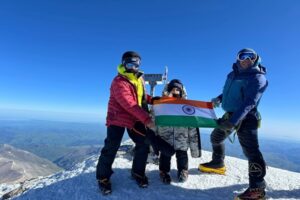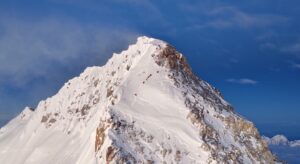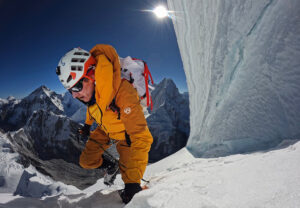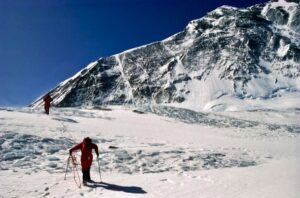The era of solo trekking has ended in Nepal. Beginning April 1, individual backpackers can only roam the country when accompanied by a guide. However, there are some exceptions to this new law.
There have been rumors about such a measure for years. In 2012, attacks on foreigners in several regions prompted Nepal to announce the ban. Authorities then postponed it.
This spring, the rule finally kicks in. Nepal cites the same safety concerns as it did in 2012.
“Every year, some 10 to 15 trekkers go missing, mostly FITs (Free Independent Trekkers), and this is serious,” Nilhari Bastola, president of the Trekking Agencies Association of Nepal told The Kathmandu Post.

Solo trekker in the Annapurna region, Macchapuchare in the background.
“This decision [is] for the tourists’ benefit,” Director of Nepal’s Tourism Board Maniraj Lamichhane told The Hindustani Times. “On solo treks, tourists often get lost and might face insecurities. To mitigate that, we have come to the decision to ban solo treks.”
However, local operators told ExplorersWeb that the ban does not apply to the popular Everest region.
Everest escapes the ban
“The Nepal Tourism Board has announced that they will not be issuing TIMS Cards* for solo trekkers unless they are accompanied by a guide,” Dawa Steven Sherpa of Asian Trekking confirmed to ExplorersWeb. “Groups are still allowed, though.”
TIMS Cards
* The TIMS card that Dawa Steven refers to stands for Trekkers’ Information Management Systems and is a required safety registration. Issued by Nepal’s Ministry of Tourism, it is available from the Tourist Service Center in Kathmandu and several other places in the capital and in Pokhara.
Would-be trekkers must provide a photocopy of their passport, along with photos and proof of travel insurance, plus pay a fee of 1,000 Nepalese rupees (about $7) for international trekkers in a group. Until now, solo trekkers paid 2,000 rupees per route.
Dawa Steven points out that this ban on solo travel does not apply in practice to the Everest area. Technically, you are also supposed to get a TIMS card for Everest, but the local municipality rejected this several years ago and replaced it with its own fee. That money goes directly to maintaining trails and infrastructure. So anyone who wants to trek solo around Everest just needs to get to Lukla, pay the municipal fee there, and then the national park fee at the park entrance.
It is unclear if the Sagarmatha National Park office will impose restrictions on solo trekkers in the future.

Entrance to Sagarmatha National Park, near Namche Bazaar.
Why trek solo
Solo trekkers are common in Nepal, especially on the Khumbu Trail to Everest Base Camp and in the Annapurna region. These include either the shorter trip to Annapurna’s south side Base Camp or for more hard-core trekkers, the circuit across the Thorong La Pass. These are clear, well-beaten trails, with plenty of accommodation, restaurants, and wifi along the way.
Last year, as Nepal’s tourism recovered from the COVID disruption, 19,415 solo trekkers registered, The Kathmandu Post reported.

Trekkers approach Everest Base Camp. Photo: The Planet D
These individual backpackers are “price-conscious travelers,” as the article in The Times of India points out. But they usually also have other reasons — the search for a personal experience, a desire to travel independently, and so on.
At the same time, many individual trekkers choose to hire a guide or a porter-guide, even if they believe that they could do without one. That way, they contribute to the local economy, walk more comfortably, and let their guide find accommodation for them at the end of the day.
Of course, the most popular option in Nepal is to form or join a group operated by an agency. Nilhari Bastola told The Kathmandu Post that a guide’s fee ranges from $25 to $50 a day but “on the long and difficult trekking routes, it may range from $100 to $200 a day.” Outfitters also negotiate on their client’s behalf when hiring guides or porters.






